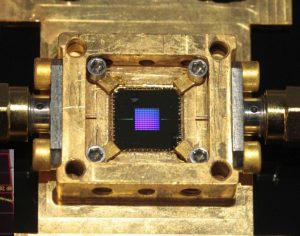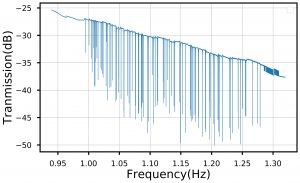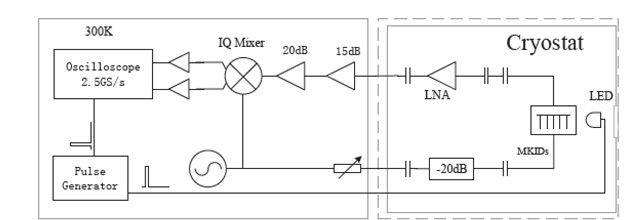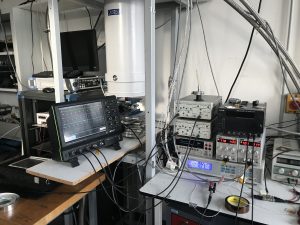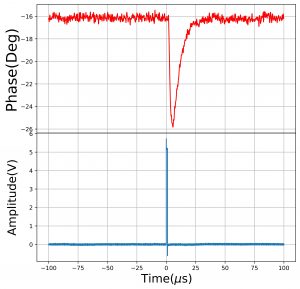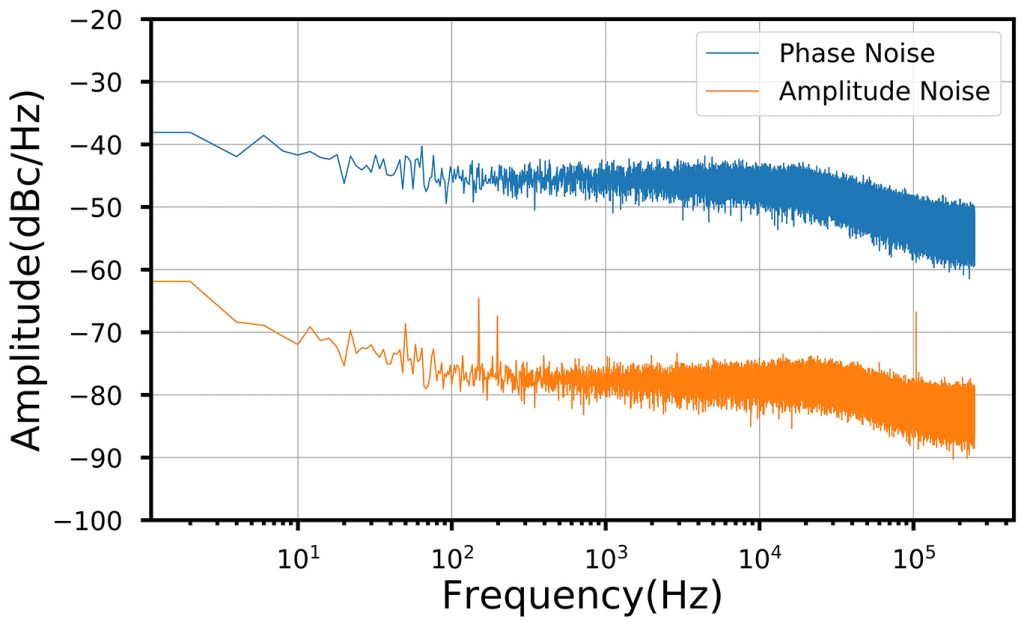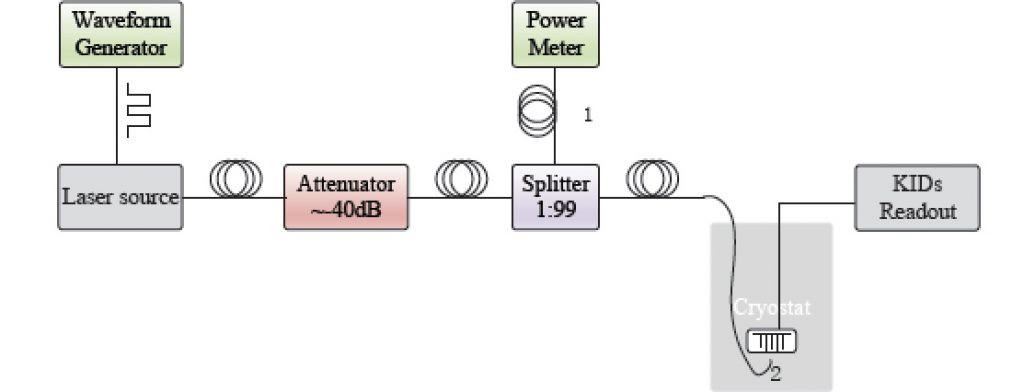V3: Detectors for the future
> Read the articles connected to the project.
.
-
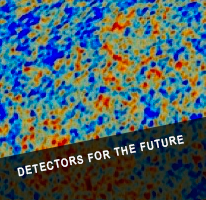
We propose a future program of detector device and data acquisition systems that have strong potential to lead to new science capabilities, especially in astronomy, and novel systems for research and innovation e.g. medicine.
We focus for the short run on cryogenic detectors of a new type (Microwave Kinetic Inductance Detectors, first developed by Caltech and JPL in 2003) and a corresponding new level data acquisition system.
-
POSITION NAME SURNAME LABORATORY NAME GRADE, EMPLOYER WP leader George Smoot APC/PCCP Professor WP co-‐leader Piercarlo Bonifacio GEPI Director WP co-‐leader Michel Piat APC/UP7 Professor WP member Samir Beldi GEPI PhD Student WP member Jie Hu APC/UP7 Post‐Doc WP member Alessandro Traini APC/UP7 Post‐Doc WP member Faouzi Boussaha GEPI Research Engineer WP member Shan Mignot GEPI Research Engineer -
The project implements a future program of detector device and data acquisition systems that have strong potential to lead to new science capabilities and novel systems for research. We focus for the short run on cryogenic detectors of a new type and a corresponding new level data acquisition system. Our proposed specific detectors are relevant to the future of astronomy as a device that is like an improved CCD able to make images while detecting individual photons and measuring the individual photon energy to a resolution as good as 1% in the blue. The applications of this kind of detector technology are many and in particular in to Earth and Planetary Sciences, as well as medicine.
Cryogenic detectors, in particular Transition Edge Sensors (TES), have demonstrated their fundamental role in photon and particle detection, from millimeter–waves, to Dark Matter search, or again X–ray Astrophysics. A new type of detectors, Microwave Kinetic Inductance Detectors (MKIDs) represents a very promising technology. The principle of MKIDs is the following: photons incident on a strip of superconducting material break
Cooper pairs and create electrons. While the current associated to Cooper–pairs is mostly reactive and dissipation-less (and associated to their kinetic energy!), the electron current is resistive. Therefore, if a detector is probed by a microwave field, its resonant frequency, amplitude, and phase are altered when photons hit the superconducting metal. Some of the benefits of MKIDs are their relatively easy fabrication and read out, intrinsic Frequency Division Multiplexing allowing rates up to 1:500 or more (one cable entering the cryostat
bring the signals used to readout 500 detectors), their fast response, and high sensitivity, enabling single photon operation starting from energies of few electron–Volts.Structure of the collaboration APC-GEPI.
The major aims are for GEPI to develop the Optical/IR MKID devices and for APC to test and evaluate them and to work on developing the data acquisition system first for those tests and evaluation efforts and then for eventual uses at observatories. GEPI will develop sample devices, help evaluate the test results, and work in parallel to define the longer-term goals with the devices and for the full system to be used for scientific operations. APC will be responsible to develop the test and evaluation system and will work on developing more specifically the data acquisition systems. The detector design and fabrication activities will be concentrated at GEPI, where the know-how in the field of micro-fabrication of devices, the availability of infrastructures, in particular clean rooms for the fabrication of superconducting devices (including electron-beam lithography), will allow fast prototyping. Moreover, deployment of instrumentation in the VIS/NIR is another strong asset of the Laboratory, and this is the kind of competences that complement those available at APC and PCCP. The interest at GEPI is particularly related to MKID use in spectroscopy, and to their rapid response and reset time (that can be of the order of few tens of μs) which make these devices suitable as wavefront sensors in adaptive optics, or even to explore holographic techniques to get rid of atmospheric turbulence. In parallel, APC and PCCP have been carrying out MKID development at mm–waves since 2012. The heritage of this activity is a solid know–how on device design, fabrication and characterization, and an operational funded programs, allowed to assemble a 300mK optical cryostat, equipped with all the required ancillary bench instrumentation and detector readout electronics. A collaboration with Kazakhstan, channeled through
the Endowment Fund Physics of the Universe, has also provided significant funding of these activities in 2016, and 2017.
Moreover, a new fridge based on an ADR system to reach 100mK was acquired in 2017 for visible and near–IR KIDs characterization. APC and PCCP will take care especially of detector characterization, which for the first 2 years means essentially equipping the 100 mK cryostat and acquiring the necessary skills to operate detectors in a photon counting regime, with time resolution of the order of few μs on each pixel. For this, a key person is an electronic engineer specialized in digital electronics, able to contribute to this fundamental aspect of detector readout. An engineer matching this profile is expected to join the team in the early phases, and work full time on the project for 2 years.Main results obtained during 2018:
Fabrication of metal insulator metal (MIM) capacitor KIDs
For the KIDs operates in the Near-IR and optical bands, the size of the capacitor will be main limit for the pixel density on a single wafer. In order to reduce the size of the capacitor, GEPI has spent great efforts to fabricate the MIM capacitor KIDs, which is shown in Figure 1. The insulator between the capacitor is the Al!!!. The measured resonance frequencies are between 0.95~1.3GHz. The measured internal quality factors are about
50,000. The measurement is done by VNA. There are 100 pixels on this chip. Various insulator materials, such as SiO, AlN and air, are under investigation for MIM Capacitor KIDsFigure 1 MIM capacitor KIDs sample
Noise and transient signal measurement.
A homodyne transient signal detection system based on the equipment at APC has been installed, as is shown in Figure 2. The oscilloscope used in the system is HDO6034 from Teledyne with 2.5GS/s. The KIDs is illuminated by a white-color LED and is read out with an homodyne IQ mixer. The LED is mount in front of the KIDs for simplicity. The LED is moderated with a pulse generator (WF 1946A) at 1kHz with pulse width of 1us, which is limited by WF 1946A. KIDs with resonance frequency within 2.2GHz can be measured with this system, which is set by the signal generator SML02. A signal generator working up to 10GHz will be needed as the GEPI will design KIDs with resonance up to 8GHz.
The measured Lifetime of a near-IR KIDs is shown in Figure 3. The measured result has been averaged for 0 times to get better signal to noise ratio and the pulses are aligned by the pulse. The measured lifetime of the TiN KIDs is about 15μs.
Figure 3 Lifetime measurement setup and measured pulse response of the TiN KIDs
The phase and amplitude noise spectrum are obtained by reading the amplitude and phase at the resonance frequency for a time period, for example, 10s. The measured noise is shown in Figure 4. The measured result shows that the KIDs has very high phase noise, which is mainly due to the dielectric (Al2O3) between the metal-insulator-metal (MIM). KIDs with different insulator will be investigated to reduce the noise. The amplitude noise is mainly limited by the low noise amplifier, whose noise temperature is about 50K.
Design of optical access of ADR
There are two main problem The LED will heat the chip up as is shown in the scheme shown in Figure 5. For further characterization of the KIDs, the input power of the power has to be calibrated. We have chosen the optical fiber to illuminate the KIDs in the ADR. The laser needs to be thermally stabilized to get stable output power. For single photon detection, a pulse of 30 photons at input of the cryostat, which is corresponding to – 61dBm of a 10ns pulse at 850nm. However, usual optical power meters have low power limit around -60dBm. Thus, the 1:99 splitter is used to alleviate the requirement of the power meter.
The calibration of optical power can be outlined in the following steps.
1. Calibration of the attenuator. Connect the power meter to the attenuator, and record the output value with various attenuation.
2. Calibration of the power splitter. Connect the power meter to port 1 with port 2 connected to a matched absorber, and record the value with various attenuation. Then connect the power meter to port 2 with port 1 connected.
The optical calibration system has been delivered and will be tested soon. Due to the delay of the superconducting coaxial cables for the ADR, the current ADR is not fully operational. Once the cables are installed, all measurement can be carried out in the new cryostat.Antenna coupled multi-color KIDs
There have been efforts in APC to develop antenna coupled multi-color KIDs working in at millimeter wavelength. Measurements are going on for the millimeter wave KIDs in the lab.
-
Tartari, B. Bélier, N. Bleurvacq, M. Calvo, D. Cammilleri, T. Decourcelle, et al.,
LEKIDs as mm-‐Wave Polarisation Analysers: Fabrication, Test Bench and Early Results,
Journal of Low Temperature Physics, vol. 184, pp. 167-‐172, 2016.Peron, S., Moreira, M., Putlitz, B. and Kurz, M.D. (2017)
Solar wind implantation supplied light volatiles during the first stage of Earth accretion
Geochemical perspective letters 3, doi: 10.7185/geochemlet.1718.Jaupart, E., Charnoz, S. and Moreira, M. (2017)
Primordial atmosphere incorporation in planetary embryos and the origin of terrestrial Neon
Icarus 293, 199-205.Moreira , M., Rouchon, V., Muller, E. and Noirz, S. (2017)
The xenon isotopic signature of the mantle beneath Massif Central
Geochemical Perspective Letters 6, 28–32.A. Traini, A. Tartari, G. Bordier, B. Faouzi, C. Chaumont, B. Samir, F. Reix, M. Piat, 2018
Dual-Color Antenna-Coupled LEKID for Next-Generation Multi-chroic CMB Focal Planes,
Journal of Low Temperature, Physics vol. 193, pp. 170-175, 2018

